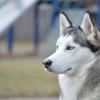Home
Tips & Tricks
Sony Tips
Sony a6400
Sony a6300
Sony a6000
Canon Tips
Canon M50 Mark II
Canon M50
Canon 6D Mark II
Canon 6D
Canon 7D Mark II
Canon 7D
Canon 90D
Canon 80D
Canon 77D
Canon 70D
Canon 60D
Canon T7 · 2000D
Canon T7i · 800D
Canon T6s · 760D
Canon T6i · 750D
Canon T6 · 1300D
Canon T5i · 700D
Canon T5 · 1200D
Canon T4i · 650D
Canon T3i · 600D
Canon T3 · 1100D
Canon T2i · 550D
Canon SL2 · 200D
Canon SL1 · 100D
Nikon Tips
Nikon D750
Nikon D500
Nikon D7500
Nikon D7200
Nikon D7100
Nikon D5600
Nikon D5500
Nikon D5300
Nikon D5200
Nikon D5100
Nikon D3500
Nikon D3400
Nikon D3300
Nikon D3200
Nikon D3100
Cheat Sheets
Sony Cheat Sheets
Sony a6300
Sony a6000
Canon Cheat Sheets
Canon M50 Mark II
Canon M50
Canon 6D Mark II
Canon 6D
Canon 7D Mark II
Canon 7D
Canon 90D
Canon 80D
Canon 77D
Canon 70D
Canon 60D
Canon T7 · 2000D
Canon T7i · 800D
Canon T6s · 760D
Canon T6i · 750D
Canon T5i · 700D
Canon T6 · 1300D
Canon T5 · 1200D
Canon T4i · 650D
Canon T3i · 600D
Canon T3 · 1100D
Canon T2i · 550D
Canon SL2 · 200D
Canon SL1 · 100D
Nikon Cheat Sheets
Nikon D750
Nikon D500
Nikon D7500
Nikon D7200
Nikon D7100
Nikon D5600
Nikon D5500
Nikon D5300
Nikon D5200
Nikon D5100
Nikon D3500
Nikon D3400
Nikon D3300
Nikon D3200
Nikon D3100


Comments
The first is reflection control. These objects are, of course, greatly reflective, and that can work both for you and against you. Try to find angles in which the reflections are not blinding or blown out and contain some interesting things other than yourself.
Flash will have to be a bit oblique to avoid harsh reflections back.
As far as backgrounds, if you want close and far both in focus, maximize your depth of field by stopping down and by using as wide a focal length as you can. You'll begin to lose a small amount of overall definition at F stops higher than about 11 to diffraction, but this trade off may be necessary if you want to minimize blur. For most of this, you'll probably be best off with the kit lens, as the 55-200mm has too much background blur. It's nice for portraits, but not for sharp backgrounds.
The D3200 does not have depth of field preview, so some of this must be guessed at or done with a cheat. Here is the cheat.
In Live view, the live view you get will depend on the aperture you chose before you went into live view. You can change aperture and it will alter exposure appropriately, but it will not change the view. So to get depth of field preview, choose an aperture, enter live view, and see it there. To change the view, you must exit live view, choose a new aperture, then re-enter live view. There will be some exposure compensation in the display, but may not be enough when things get dark. What you see in the display is not the exposure the camera will choose for the image.
If you're using flash or a tripod, try to keep ISO as low as you can to limit noise. If no flash and freehand, you'll have to up the ISO to keep your aperture small enough for depth of field, but you'll have to decide on compromises.
Stick to Raw mode for your images and you can adjust some things in post processing. At night, the camera's meter will ask for too much brightness, but if you fudge it right, this can be an advantage. Bright exposures are less noisy than dark ones. If you can keep the overall exposure less than two stops too high you'll get a too-bright exposure, but when you lower it by the allowed two stops in post you will lower the noise as well.